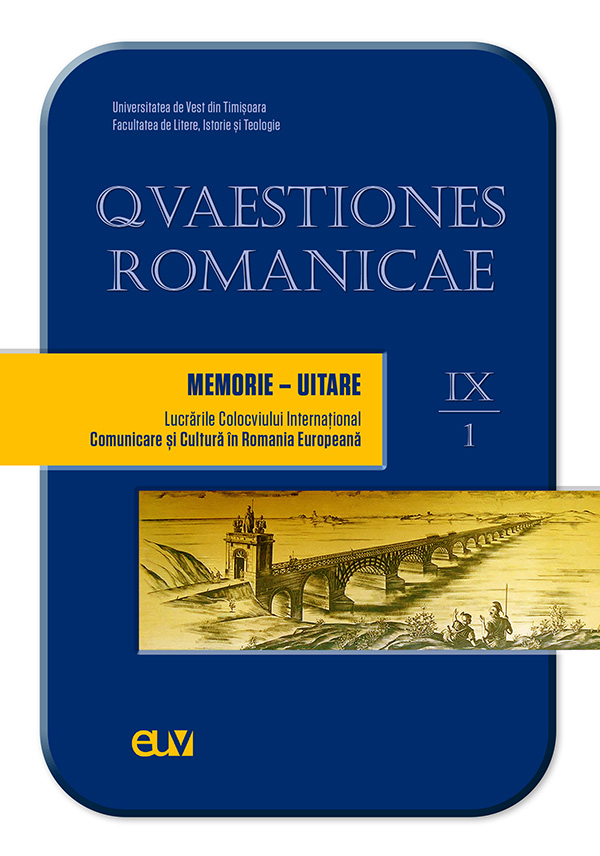Mnemosyne și Anamnesis – reprezentări religioase în opera lui Hesiod
Abstract: (Mnemosyne and Anamnesis – Religious Representations in Hesiod’s Work) Our study aims to analyze the religious representations of the memory and recollection in Hesiod’s work, following their transposition from the cosmology plan onto the eschatology one, starting from their deification and reaching out to their power and sacred message. The Hesiodic concepts or themes, along with the Homeric ones, represented sources of works for later writers. On the other hand, the outstanding work of this great and ancient epic author depicts a broad genesis in a systematic and comprehensive way, approaching various themes that are placed at the boundaries between myth and philosophy. In The Theogony, the past is part of the cosmos, exploring it means discovering what hides deep inside a being; the past is shown as a dimension of the world beyond, and the history that Mnemosyne sings is a decoding of the invisible. In return, Anamnesis, the Recollection, is presented in the poetry of moral and religious inspiration as a form of initiation. In Hesiod’s work, Mnemosyne is the one who brings the memory, but also the one who helps forgetting the concerns. Remembering the past compensates for forgetting the present. Memory is shown as a source of immortality, of which the funerary inscriptions speak about, assuring the deceased the survival in the otherworld. The memory of invisible times belongs to the world beyond. The memory and recollection are linked to folk mythical history in Hesiod’s writings, accompanied by the meditation upon Time and Soul problems.
Keywords: memory, recollection, forgiveness, immortality, time.
Rezumat: Studiul nostru îşi propune să analizeze reprezentări religioase ale memoriei şi ale amintirii în opera lui Hesiod, urmărind transpunerea lor de pe planul cosmologiei pe cel al escatologiei, pornind de la divinizarea acestora şi ajungând la puterea şi mesajul lor sacru. Conceptele sau temele hesiodice, alături de cele homerice, au constituit surse ale operelor scriitorilor ulteriori. Pe de altă parte, creaţia acestui mare şi vechi autor epic înfăţişează sistematic şi cuprinzător o amplă geneză, cu teme variate, care se plasează la hotarul dintre mit şi filosofie. În Teogonia, trecutul face parte din cosmos, a-l explora înseamnă a descoperi ceea ce se ascunde în adâncurile fiinţei; trecutul apare ca o dimensiune a lumii de dincolo, iar istoria pe care o cântă Mnemosyne este o descifrare a invizibilului. În schimb, Anamnesis apare în poezia de inspiraţie morală şi religioasă ca formă de iniţiere. Mnemosyne, cea care aduce amintirea este la Hesiod şi cea care aduce uitarea necazurilor. Rememorarea trecutului are drept compensaţie uitarea prezentului. Memoria apare ca un izvor al nemuririi, despre care vorbesc inscripţiile funerare, asigurându-i celui decedat supravieţuirea în lumea de dincolo. Memoria timpurilor invizibile aprţine lumii de dincolo. Memoria şi amintirea sunt legate la Hesiod de istoria mitică a oamenilor, însoţită de meditaţia asupra problemelor Timpului şi Sufletului.
Cuvinte-cheie: memorie, amintire, uitare, nemurire, timp.
